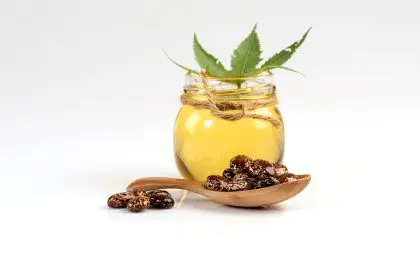Swollen gums signal inflammation that requires gentle yet thorough cleansing to restore healthy oral tissues. These proven methods help reduce inflammation while promoting healing through targeted care and proper oral hygiene techniques.
Swollen gums indicate underlying inflammation that can progress to more serious periodontal conditions without proper intervention. This common oral health issue affects millions of people and stems from bacterial buildup, inadequate oral hygiene, or various health conditions that compromise gum tissue integrity. Addressing swollen gums promptly through effective cleansing methods helps prevent progression to advanced gum disease while restoring comfort and optimal oral health.
The key to successfully treating swollen gums lies in gentle yet thorough removal of irritants while supporting the natural healing process. Harsh scrubbing or aggressive cleaning can worsen inflammation and delay recovery, making technique just as important as the methods chosen. Understanding how different cleansing approaches work helps create comprehensive oral care routines that address both immediate symptoms and underlying causes.
Salt water rinses for gentle inflammation reduction
Salt water rinses provide one of the most accessible and effective methods for cleansing swollen gums while promoting natural healing processes. The antimicrobial properties of salt help reduce harmful bacteria levels in the mouth, while the osmotic effect draws excess fluid from inflamed tissues to decrease swelling and discomfort.
Creating an effective salt water rinse requires the proper concentration to maximize benefits without causing tissue irritation. Dissolve half a teaspoon of pure salt in eight ounces of warm water, ensuring complete dissolution before use. The water temperature should be comfortably warm but not hot enough to cause additional tissue irritation or burns.
The rinsing technique significantly affects the treatment’s effectiveness. Take a mouthful of the salt water solution and gently swish it around the mouth for 30-60 seconds, ensuring the liquid reaches all areas of gum inflammation. Focus particularly on problem areas but avoid aggressive swishing that might traumatize already sensitive tissues. Spit out the solution completely and avoid swallowing large amounts of salt water.
Frequency and timing matter for optimal results. Perform salt water rinses two to three times daily, preferably after meals when bacterial activity peaks. The rinse can be used immediately after eating to help remove food particles and bacteria before they establish colonies on gum surfaces. Continue this routine for several days to a week while monitoring symptom improvement.
The healing mechanism involves multiple beneficial effects on oral tissues. Salt creates an environment hostile to many harmful bacteria while promoting the migration of healing cells to affected areas. The osmotic action helps reduce fluid accumulation in inflamed tissues, providing relatively quick relief from swelling and pressure sensations.
Different types of salt offer varying benefits, with sea salt and Himalayan pink salt containing additional minerals that may support healing. However, plain table salt works effectively and remains the most economical option. Avoid flavored or processed salts that contain additives potentially irritating to inflamed gum tissues.
Oil pulling for deep bacterial removal
Oil pulling represents an ancient cleansing method that effectively removes bacteria and toxins from oral tissues while providing anti-inflammatory benefits for swollen gums. This technique involves swishing edible oil in the mouth for extended periods, allowing the oil to trap bacteria and inflammatory compounds for removal.
Coconut oil stands out as the preferred choice for oil pulling due to its antimicrobial properties, particularly against streptococcus bacteria commonly associated with gum inflammation. The lauric acid in coconut oil demonstrates significant antibacterial effects while remaining gentle on oral tissues. Sesame oil and sunflower oil represent traditional alternatives with proven effectiveness.
The proper technique requires patience and gradual adaptation to build tolerance for the extended swishing period. Start with one teaspoon of oil and gradually increase to one tablespoon as comfort allows. Begin swishing gently for 5-10 minutes and gradually work up to 15-20 minutes for maximum benefit. The oil will become thinner and may change color as it picks up bacteria and debris.
Timing considerations affect both effectiveness and practicality. Perform oil pulling on an empty stomach, preferably first thing in the morning before eating or drinking. This timing maximizes bacterial removal when overnight accumulation peaks while avoiding interference from food or beverages. The extended time requirement makes morning sessions most practical for busy schedules.
Proper disposal prevents plumbing problems while maintaining hygiene. Spit the used oil into a trash receptacle rather than down drains, as oil can solidify and cause blockages. The used oil contains concentrated bacteria and toxins that should not enter water systems. Rinse the mouth with warm water after oil pulling and brush teeth normally.
The scientific basis involves the mechanical action of oil trapping bacteria within its viscous structure while antimicrobial compounds directly attack harmful microorganisms. The extended contact time allows thorough penetration into gum pockets and between teeth where bacteria accumulate. Regular practice helps maintain lower bacterial levels and reduced inflammatory responses.
Adaptation strategies help newcomers adjust to the technique gradually. Start with shorter sessions and smaller oil amounts to build tolerance. If jaw fatigue occurs, reduce the vigor of swishing while maintaining gentle motion. Some people find it easier to perform oil pulling while showering or during other morning routines to make the time pass more quickly.
Hydrogen peroxide rinses for targeted antimicrobial action
Hydrogen peroxide provides powerful antimicrobial effects that specifically target bacteria responsible for gum inflammation while helping remove debris from difficult-to-reach areas. This oxidizing agent releases oxygen that creates an environment hostile to anaerobic bacteria commonly found in gum disease while providing gentle bleaching effects that can improve oral aesthetics.
Proper dilution ensures safety while maintaining effectiveness. Use only 3% hydrogen peroxide solution as sold in pharmacies, and dilute it further with equal parts water to create a 1.5% solution suitable for oral use. Stronger concentrations can damage oral tissues and should never be used undiluted in the mouth. Mix fresh solution for each use to maintain potency.
Application technique focuses on gentle delivery to inflamed areas without causing additional irritation. Take a small amount of diluted solution and swish gently for 30-60 seconds, paying attention to areas of gum swelling. The solution may foam slightly as it reacts with bacteria and organic matter, which indicates its antimicrobial action. Spit out completely and rinse with plain water afterward.
Frequency guidelines prevent overuse while maximizing benefits. Limit hydrogen peroxide rinses to once daily, as excessive use can disrupt normal oral bacteria balance and potentially irritate healthy tissues. Use this method for short-term treatment periods of 7-10 days rather than as a long-term oral care routine.
Safety considerations require careful attention to prevent adverse effects. Never swallow hydrogen peroxide solutions, as ingestion can cause stomach irritation and other health problems. Discontinue use if excessive irritation, burning, or tissue whitening occurs. People with sensitive oral tissues may need to dilute the solution further or choose alternative cleansing methods.
The mechanism of action involves oxygen release that directly kills anaerobic bacteria while helping to lift debris and bacterial biofilms from tooth and gum surfaces. This oxidizing effect also helps neutralize bacterial toxins that contribute to inflammation and tissue damage. The foaming action provides mechanical cleaning benefits in addition to chemical antimicrobial effects.
Storage and handling maintain solution effectiveness while ensuring safety. Store hydrogen peroxide in its original dark container away from light and heat, which can break down the active compounds. Check expiration dates regularly and replace old solutions that may have lost potency. Keep the solution away from children and clearly label any diluted mixtures.
Herbal rinses for natural healing support
Herbal rinses harness the anti-inflammatory and antimicrobial properties of medicinal plants to support gum healing while providing gentle cleansing action. These natural alternatives offer effective treatment options for people preferring plant-based approaches or those with sensitivities to conventional treatments.
Chamomile tea creates an excellent anti-inflammatory rinse with mild antimicrobial properties that soothe irritated gum tissues. Brew strong chamomile tea using two tea bags or two teaspoons of dried chamomile flowers in eight ounces of hot water. Allow steeping for 10-15 minutes to extract maximum beneficial compounds, then cool to comfortable temperature before use.
Sage demonstrates significant antimicrobial and astringent properties that help reduce bacteria while tightening swollen tissues. Prepare sage rinse by steeping two teaspoons of dried sage leaves in boiling water for 15 minutes, then strain and cool. The astringent qualities help reduce swelling while antimicrobial compounds target harmful bacteria.
Green tea provides antioxidant and anti-inflammatory benefits through compounds like catechins that specifically benefit oral health. Brew green tea slightly stronger than normal drinking strength and allow it to cool completely before using as a mouth rinse. The polyphenols in green tea help reduce inflammation while providing antimicrobial effects against oral bacteria.
Turmeric rinses offer potent anti-inflammatory effects through curcumin compounds that help reduce swelling and promote healing. Mix half a teaspoon of turmeric powder with eight ounces of warm water, stirring thoroughly to create an even suspension. The bright yellow color may temporarily stain teeth but provides significant anti-inflammatory benefits.
Preparation methods affect the concentration and effectiveness of herbal compounds. Use organic herbs when possible to avoid pesticide residues that might irritate inflamed tissues. Fresh herbs generally provide stronger effects than dried alternatives but require larger quantities. Strain all herbal preparations thoroughly to remove plant particles that could irritate gum tissues.
Application techniques maximize contact time while ensuring comfort. Swish herbal rinses gently for 1-2 minutes, allowing adequate time for beneficial compounds to interact with oral tissues. The longer contact time compared to commercial rinses helps herbal compounds penetrate gum pockets and provide sustained effects.
Storage considerations maintain herbal rinse potency while preventing contamination. Prepare fresh herbal rinses daily when possible, as natural preparations lack preservatives and can spoil quickly. Refrigerate any leftover herbal rinses and use within 24-48 hours for optimal safety and effectiveness.
Additional cleansing support methods
Proper brushing technique enhances the effectiveness of specialized gum cleansing methods by removing plaque and bacteria that contribute to inflammation. Use a soft-bristled toothbrush with gentle circular motions along the gum line, avoiding aggressive scrubbing that can worsen inflammation. Electric toothbrushes with pressure sensors help maintain appropriate force levels.
Interdental cleaning becomes crucial when dealing with swollen gums, as bacteria accumulate between teeth where brushing cannot reach effectively. Use dental floss or interdental brushes gently to avoid traumatizing inflamed tissues while still removing bacterial deposits. Water flossers provide gentler alternatives for people with very sensitive or severely swollen gums.
Dietary considerations support gum healing by providing necessary nutrients while avoiding foods that worsen inflammation. Increase consumption of vitamin C-rich foods that support collagen production and tissue repair. Reduce sugar intake that feeds harmful bacteria, and avoid hard or sharp foods that might traumatize swollen gum tissues.
Hydration levels affect oral health and the effectiveness of cleansing methods. Adequate water intake helps maintain saliva production that naturally cleanses the mouth and neutralizes bacterial acids. Dry mouth conditions worsen gum inflammation and reduce the effectiveness of natural cleansing mechanisms.
Timing coordination between different cleansing methods prevents overuse while maximizing benefits. Space different treatments throughout the day rather than using multiple methods simultaneously. Allow at least 30 minutes between different rinses to prevent dilution effects and tissue irritation from excessive treatment.
Monitoring progress and adjusting approaches
Symptom tracking helps determine which cleansing methods work best for individual situations while indicating when professional intervention becomes necessary. Monitor changes in swelling, pain levels, bleeding, and overall gum appearance to assess treatment effectiveness over time.
Warning signs that require professional dental evaluation include persistent or worsening swelling after 7-10 days of consistent home treatment, severe pain that interferes with eating or sleeping, pus discharge from gum tissues, or fever accompanying gum symptoms. These signs may indicate advanced infection requiring professional treatment.
Gradual improvement typically occurs over several days to two weeks with consistent application of appropriate cleansing methods. Initial improvement in pain and swelling should occur within 2-3 days, followed by gradual normalization of gum appearance and comfort levels.
Method rotation can prevent bacterial adaptation while addressing different aspects of gum inflammation. Alternate between salt water and herbal rinses or combine oil pulling with hydrogen peroxide treatments on different days to provide comprehensive cleansing approaches.
Long-term maintenance prevents recurrence of gum swelling through continued attention to oral hygiene and periodic use of beneficial cleansing methods. Incorporate preferred methods into regular oral care routines even after acute symptoms resolve to maintain optimal gum health.
Professional consultation complements home cleansing methods by providing thorough evaluation and advanced treatment when necessary. Regular dental cleanings remove hardened deposits that home methods cannot address while allowing early detection of developing problems.
The four cleansing methods outlined provide effective, accessible approaches to treating swollen gums while supporting natural healing processes. Salt water rinses offer gentle antimicrobial action, oil pulling provides deep bacterial removal, hydrogen peroxide delivers targeted antimicrobial effects, and herbal rinses supply natural anti-inflammatory support. Used properly and consistently, these methods help restore gum health while preventing progression to more serious periodontal conditions. Success depends on gentle technique, appropriate frequency, and patience with the natural healing process, complemented by professional dental care when necessary.












